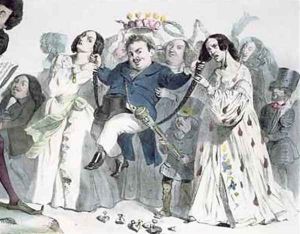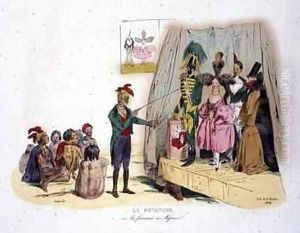Granville Paintings
Jean Ignace Isidore Gérard, widely recognized by his pseudonym J.J. Grandville, was a seminal French caricaturist and illustrator, born in 1803 in Nancy, France, and passed away in 1847 in Vanves. Grandville's artistic journey began in a family steeped in artistic tradition; his father was a painter of miniatures. Early in his career, Grandville moved to Paris, where he quickly made a name for himself in the burgeoning field of lithography and illustration. His initial works were published in 'La Silhouette' in 1828, but it was his contributions to 'La Caricature' and 'Le Charivari,' prominent French satirical magazines, that truly showcased his unique talent and wit. Grandville's illustrations often featured animals endowed with human characteristics, a motif that became a hallmark of his style and allowed him to critique French society and politics with both humor and sharp insight.
Grandville's major works include 'Les Métamorphoses du jour' (1829), a series of illustrations that depict animals in human attire, engaging in distinctly human activities, which gained him widespread acclaim. His ability to infuse animals with human-like expressions and situations was revolutionary and paved the way for future generations of illustrators. Beyond satire, Grandville ventured into the realm of the fantastical and surreal with works such as 'Un Autre Monde' (1844) and illustrations for classics like 'Gulliver's Travels' and 'Don Quixote.' His work on 'Un Autre Monde' is particularly noted for its imaginative and often bizarre imagery, making Grandville an early precursor to the Surrealist movement of the 20th century.
Despite his success, Grandville's life was marked by personal tragedy, including the deaths of his wife and children, which deeply affected him and influenced his later work. He died in 1847, leaving behind a legacy that would influence not only the world of caricature and illustration but also the development of comic art and surrealism. Grandville's imaginative universe, where animals and fantastical beings speak to the follies and dreams of humanity, continues to captivate and inspire artists and audiences alike. His work remains a testament to the power of visual satire and the endless possibilities of artistic imagination.

